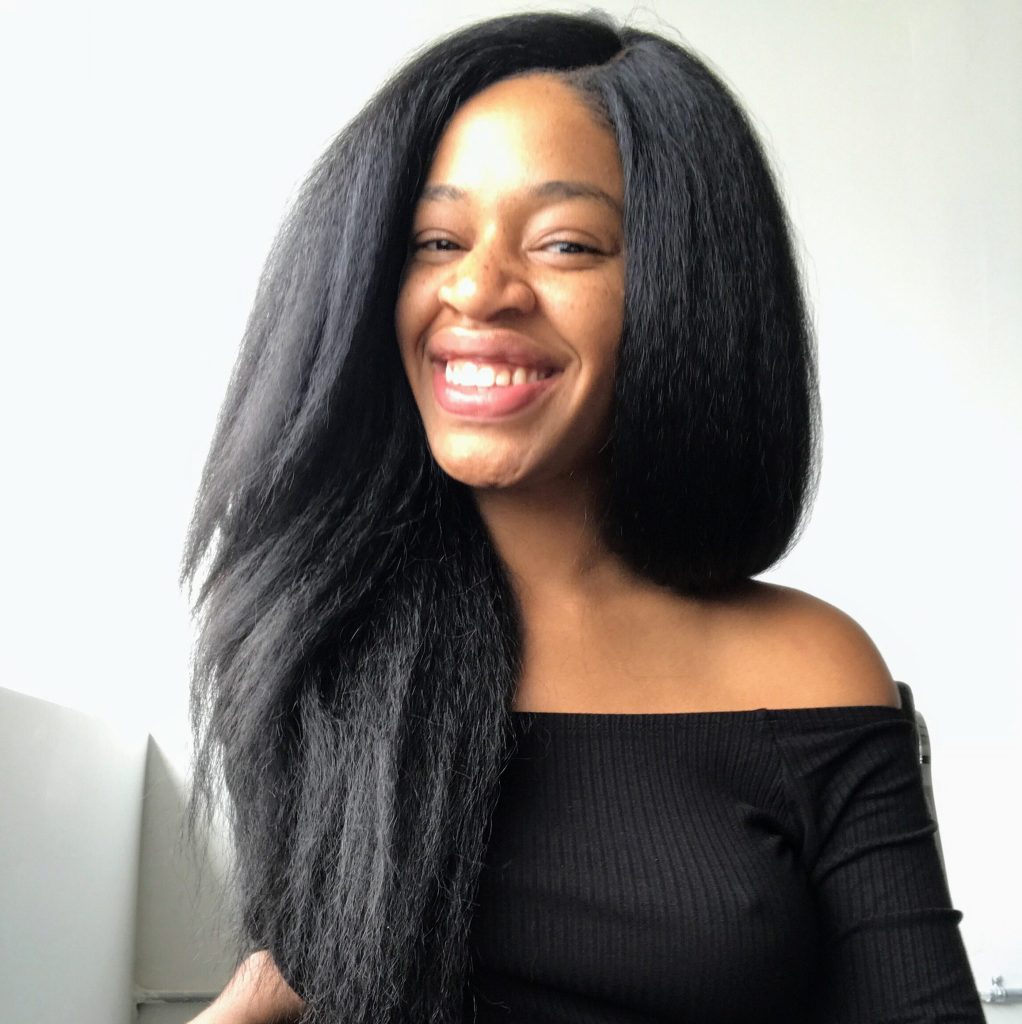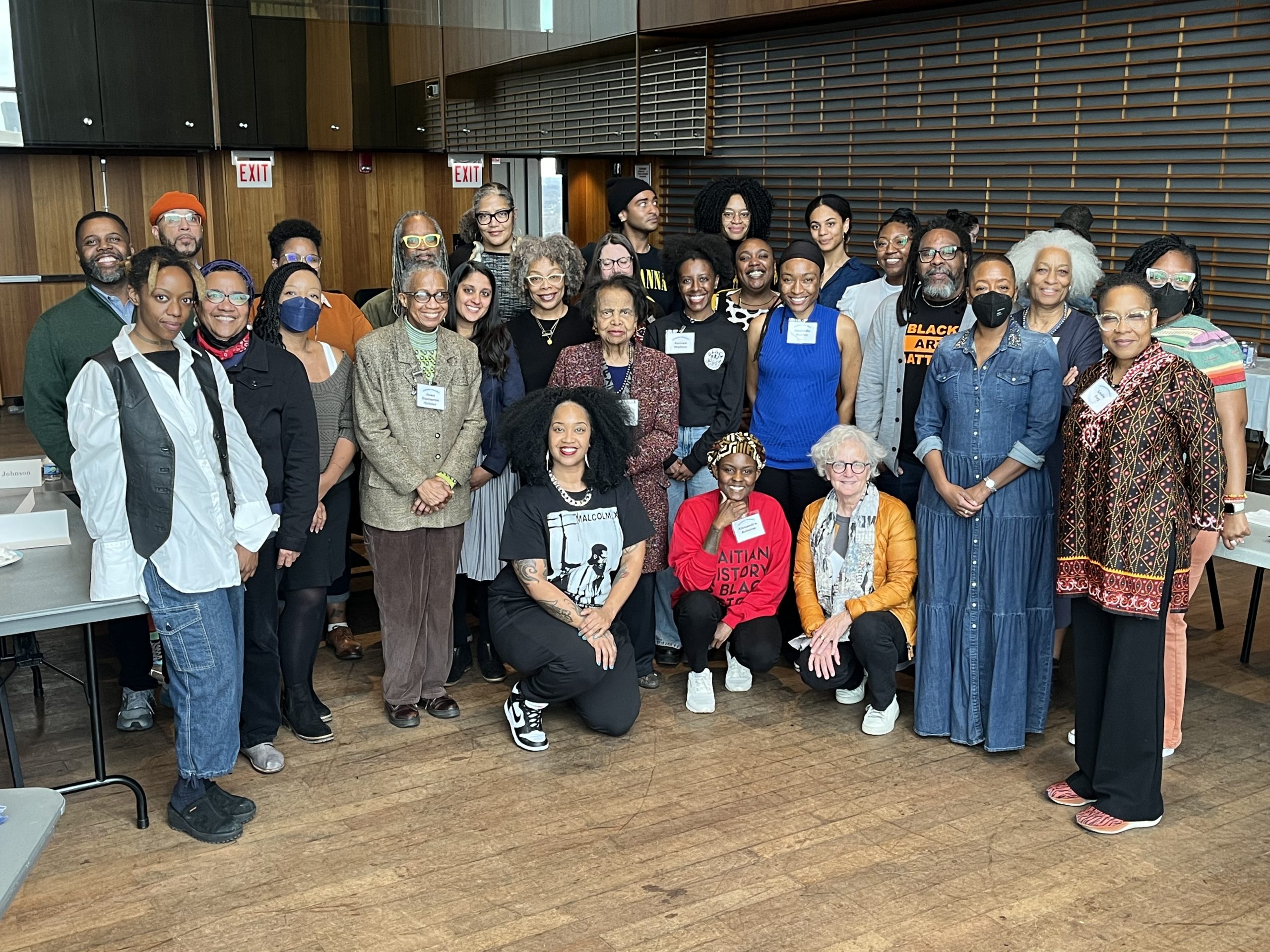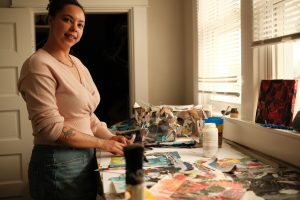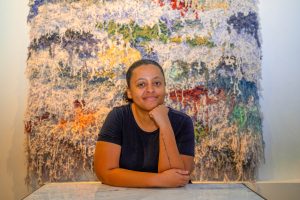“I believe in the power of Black Art,” said Dawn Renee Jones, writer, educator, and on a cold gray weekend at the end of March, facilitator, calling upon us to repeat after her, and we did in unison. “We” was a group of 20 or so culture workers from the Midwest. Dawn’s statement “I believe in the power of Black Art” was the mantra that led us into CONDUIT – A Midwestern Black Visual Art Preservation Initiative, a weekend-long multigenerational conversation about the preservation and continuation of Black histories through art.
Whether enshrined in stone, tucked in books, or passed down by word of mouth, stories are powerful. They shape our understanding of the world, connect us with the past, define our present, and allow us to envision the future. Across this country, we have thousands of museums, archives, libraries, and cultural institutions dedicated to preserving stories. But, the 2022 Burns Halerpin report, an in-depth, data-driven analysis of diversity and representation in museums, showed that between 2008 and 2020, just 2.2 percent of acquisitions at U.S. museums were of works by Black artists. At that same time, according to the report, only 6.6% of museum exhibitions focused on Black art. Leslie Guy—scholar, museum professional, all-around cultural powerhouse, and the organizer of the weekend events—in her opening remarks calculated that less than 1 percent of institutions focus solely on preserving Black culture. Those grim statistics were the reason we gathered around a group of conference tables on the University of Chicago’s campus: to discuss possibilities and explore innovative models to preserve Black stories and histories. The shortcomings of Western cultural institutions can be listed in perpetuity but the conversation didn’t linger on that fact. Leslie proclaimed early on, and rather forcefully, “[We’re not here to] talk about museums. We’re here to talk about what we want to do and how we want to do it.”
The conference invitees hailed from all over the Midwest. As a freelance writer, I was a bit of an outsider, but even so, I recognized some faces: peers and colleagues from Chicago; acquaintances whose work I was familiar with; and folks I’ve known and admired online but never met in person. The world of historical preservation is so small, and the clique of people doing and caring about the work of specifically Black people is even smaller. Even so, the people present and their range of experiences varied greatly. Some of the folks had decades of experience under their belts, and others headed up organizations consisting of just the founder and their parents. Some focused their preservation work on visual arts, others on neighborhoods and the stories contained therein. The conversation was dynamic. Stories were told and questions were lobbied back and forth easily. Although we represented a multiplicity of different backgrounds, Midwestern Blackness was an experience most of us shared and were all ready to fight for.
Artists have claimed the title of activist. Archivists have claimed the title of activist. Writers have claimed the title of activist. I would say the group assembled for CONDUIT were preservation activists. That activism streak was present throughout the conversation and, in some instances, the driving force behind the organization. Memorialize the Movement and George Floyd Global Memorial, both based in Minneapolis, were created in direct response to the social upheaval and protests of 2020, and a part of their preservation effort is to ensure the memorabilia from the protests and memorials continue to serve those protests in perpetuity. At one point, artist and doctoral candidate, Ego Ahiawe Sowinski, stated rather plainly, “Archives prefer the people to be dead so the archive can tell the story.” In response, she received enthusiastic snaps of agreement. And the folks from Urban Mapping Project who are doing everything in their power to maintain control of their project and keep it out of the hands of the university that sponsored the project (which included a promise to never relinquish the password to the website). All of us in that room fervently believed in pushing back against a predominantly white history that has excluded and misrepresented Black people and to wrest control of that narrative back from the clinical, prescriptive hand of uncaring preservationists who make decisions from their academic ivory towers.
There was a point in the conversation when we lingered on preservation as a continuation of Black narratives. Early on in the weekend, Leslie shared a personal story about a family quilt. It was a brief but intimate portrait of a family’s history and how the value of the object was in its use, not in the object itself. The story emphasized how it was much more meaningful to let the children and grandchildren and eventually great-grandchildren use and feel the love of the quilt instead of it being stored in a box and kept in pristine condition. By continuing to use it, the love in the quilt continues and is felt through generations. There are infinite personal stories similar to this one. But standard preservation practices can’t account for those intangible feelings of love and use. Black people need to be in archives because they have the value system and cultural competence needed to handle these intimate objects with the care they deserve.
Being in the room with Black academics, activists, artists, and intellectuals who have passionately dedicated their lives to writing a historical narrative that centers on Black people made me seriously consider my role as a historian and writer in the preservation of Black memories. We all have a role in the story of humanity; we are here and therefore a part of something bigger. As a Black woman, justice for people who look like me is at the core of everything I do. It inspires how I work, play, and engage with the world. When I think and talk about my writing practice, I do it in response to what I see lacking in the mainstream art narrative. CONDUIT pushed me to think beyond that, to ask myself, what does it look like to focus on building our narrative on the margins? What does it mean for me to write without an interest in what the mainstream is doing and to allow my work to exist on the margins, unapologetically?
There wasn’t a concrete goal for the weekend. No bylaws were written, X amount of dollars weren’t raised. But connections were made: networking connections, social connections, and thematic and conceptual connections within the work. The conference was a two-day long conversation and it was made up of those small interactions. Invaluable intangibles that, at the surface level may seem inconsequential but in the broader story of Black history, deserve to be preserved. I was really fortunate to be able to attend the conference, for my voice to be in conversation with so many other amazing voices. For the weekend I was surrounded by Black people who are doing inspiring, insightful, and responsive projects, all centered on justice. Their work as well as the objects being cared for are speaking to the moment; to our present reality. That is the power of Black art, the connection. And our mission is to continue that connection.

About the Author: Jen Torwudzo-Stroh is an arts and culture professional and freelance writer based in Chicago, IL.






